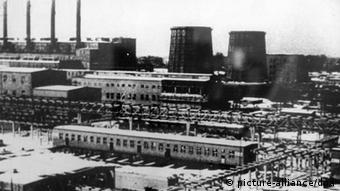 There were some 42,500 camps set up during the Nazi era – seven times more than had been thought, according to a recent study. Such numbers, researchers say, make it absurd to claim that ‘nobody knew what was going on.’
There were some 42,500 camps set up during the Nazi era – seven times more than had been thought, according to a recent study. Such numbers, researchers say, make it absurd to claim that ‘nobody knew what was going on.’
“I find it quite astonishing that, 70 years after the end of the war, one still finds new kinds of camps and new stories about individuals during the Holocaust,” says US historian Martin Dean. For 13 years, he’s been bringing together facts that historians throughout Europe, Israel and the United States have collected individually – facts that may have been known about locally, but which were never put into the context of the whole picture.
Dean is interested in the whole picture – and that’s what makes the research findings in the United States Holocaust Memorial Museum study so interesting. His team has found out that the network of camps was much denser than had been assumed. According to his figures, there were about 42,500 camps in Europe – until now, it had been thought that there were about 7,000.
30,000 forced labor camps
Dean’s studies have been received with great interest since they were first reported in The New York Times. It suddenly became clear that people were imprisoned all over Europe by the Nazis, often in inhumane conditions, with torture and hunger standard in many camps.
Some 20 million prisoners were affected altogether, and the camps had a wide variety of functions: there were 30,000 for forced laborers, 1,150 Jewish ghettos, 980 concentration camps, 1,000 prisoner-of-war camps, 500 brothels for forced prostitution. Then there were camps intended to “Germanize” prisoners, camps where women were forced to have abortions, camps where those suffering from psychiatric illness were murdered in the “euthanasia” program, and camps where prisoners were gathered for transport to the death camps.



